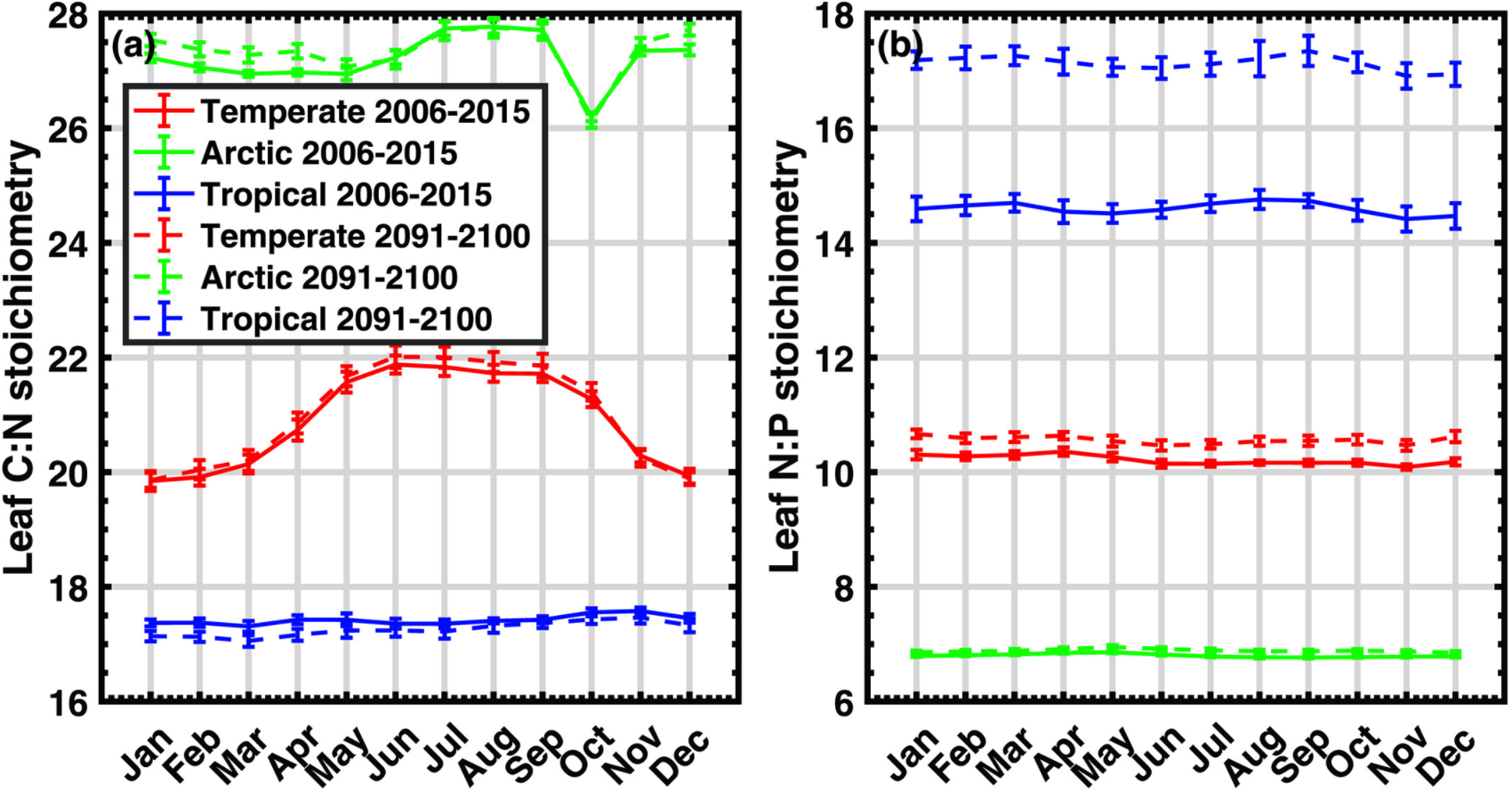Impacts of Plant Stoichiometric Traits on Terrestrial Ecosystem Carbon Accumulation Using the E3SM Land Model
Plant stoichiometry traits in E3SM.
The Science
Carbon (C) enters terrestrial ecosystems via photosynthesis and cycles with other essential nutrients (i.e., nitrogen (N) and phosphorus (P)). This coupling of C, N, and P leads to the theoretical prediction that nutrient availability will limit photosynthesis and plant growth in the future, thus affecting atmospheric CO2 concentrations and climate change.
The Impact
The lack of reliable information about plant tissue stoichiometric traits remains a challenge to quantifying nutrient limitations on projected global C cycling. In this study, scientists harmonized observed plant tissue C:N:P stoichiometry from more than 6,000 plant species using the Plant Functional Type (PFT) framework common in global land models. The study shows that nutrient stoichiometric flexibility is a dominant controller of terrestrial ecosystem responses to elevated CO2.
As the figure above shows, constrained by the observed C:N and N:P ratios, the E3SM Land Model, ELM, predicted that plant stoichiometry ratios in the future (dash line) will be dramatically different from the present-day conditions (solid line). Particularly, the tropical ecosystems will experience unprecedentedly low phosphorus conditions at the plant tissue level, which in return provides a benefit for plant biomass construction under elevated CO2 conditions due to the relatively low phosphorus cost and high plant phosphorus use efficiency.
Summary
Using observed C:N:P stoichiometry and the flexibility of these ratios as emergent plant traits, researchers show that observationally-constrained fixed plant stoichiometry does not improve model estimates of present-day C dynamics. However, adopting stoichiometric flexibility significantly improves model predictions of C fluxes and stocks. 21st-century simulations with RCP8.5 CO2 concentrations show that stoichiometric flexibility, rather than baseline stoichiometric ratios, is the dominant controller of plant productivity and ecosystem C accumulation in modeled responses to CO2 fertilization. The enhanced nutrient limitations and plant P-use efficiency mainly explain these results. This study is consistent with the previous consensus that nutrient availability will limit future land carbon sequestration but challenges the idea that imbalances between C and nutrient supplies and fixed stoichiometry limit future land C sinks. The study demonstrates that it is necessary to represent nutrient stoichiometric flexibility in models to accurately project future terrestrial ecosystem carbon sequestration.
Publication
- Zhu, Q, W Riley, C Iversen, and J Kattge. 2020. “Assessing Impacts of Plant Stoichiometric Traits on Terrestrial Ecosystem Carbon Accumulation Using the E3SM Land Model.” Journal of Advances in Modeling Earth Systems 12(4). https://doi.org/10.1029/2019ms001841.
Funding
- The U.S. Department of Energy Office of Science, Biological and Environmental Research supported this research as part of the Regional & Global Model Analysis program.
Contact
- Willliam J. Riley, Lawrence Berkeley National Laboratory



